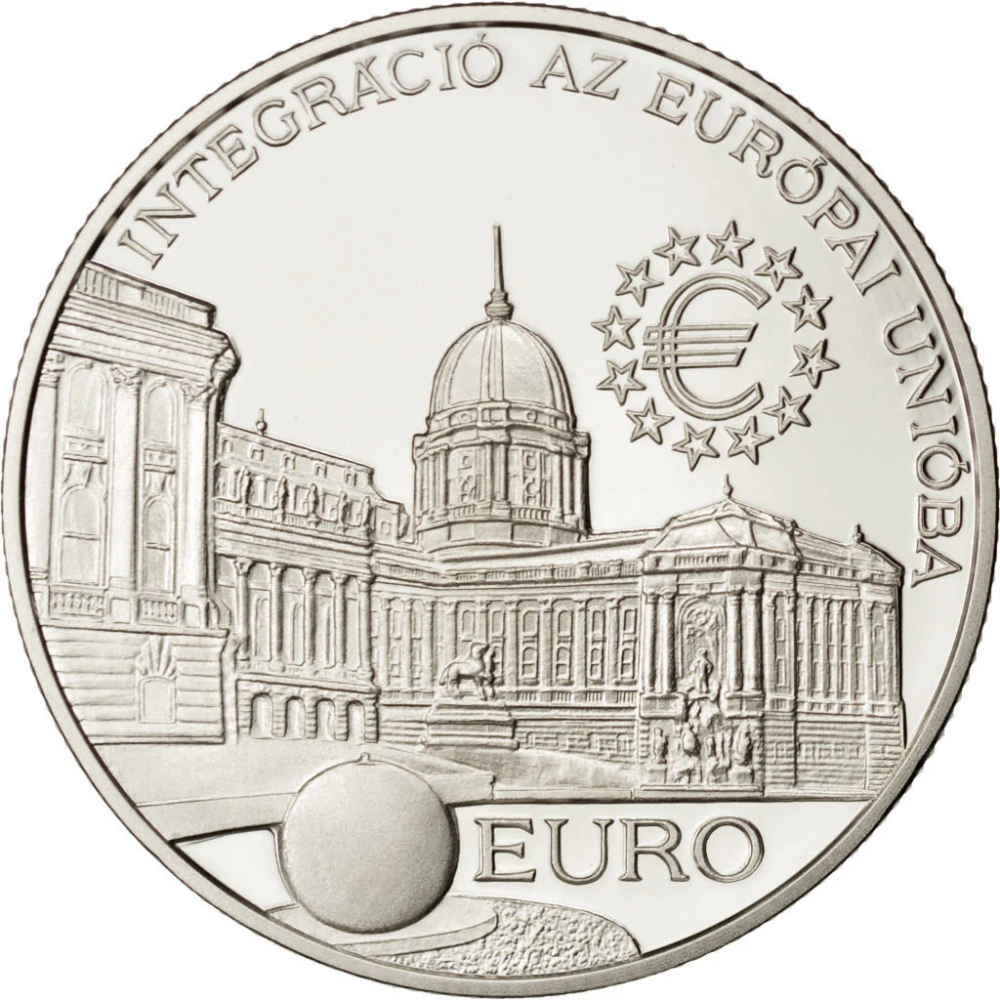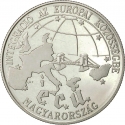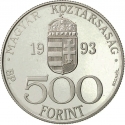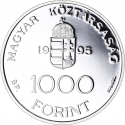You are about to finish your registration. Please check your mailbox (including spam folder). There should be a letter with a confirmation link. Check setting to make sure that your e-mail address is correct.
Send letter againDescription
The Hungarian integration into the European Union or the European community is a significant step towards political, economic, and cultural cohesion for the country. Before Hungary's accession to the EU, European integration was determined as a long-term goal, and accordingly, the country is committed to supporting European values and norms.
Since 2003, the Hungarian government has entertained plans to transition from the Hungarian forint to the euro. However, no target date has been set, and the forint remains outside the European Exchange Rate Mechanism (ERM II).
Obverse

|
Depicts a panoramic vista of the Royal Palace of Budapest atop Buda Hills. Positioned above the central image is an inscription "Integration into the European Union" in a semicircle. To the right, the Euro symbol is depicted, encircled by twelve stars representing the European Union. INTEGRÁCIÓ AZ EURÓPAI UNIÓBA |
|---|---|
Reverse

|
Depicts slightly above the center the coat of arms of the Republic of Hungary, below which is the denomination, followed by the curved inscription "FORINT" beneath it. The issuance year is divided and visible on the left and right sides of the coat of arms. Positioned along the edges of the coin, the mintmark is on the left side, while the designer's surname is placed on the right side. MAGYAR KÖZTÁRSASÁG |
| Edge |
150 reeds |
2000 Forint
Third Republic
Integration into the European Union
Royal Palace
Subscribe series
KM# 724 Schön# 228 Adamo# EM147
Integration into the European Union
Royal Palace
Related coins
Integration into the European Union
Integration into the European Union




_II._1994_30.03.2024_19.59-125.jpg)
_II._1994_30.03.2024_19.59_01-125.jpg)

